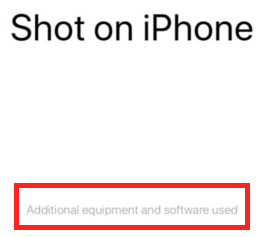The advertising strategy of the next technological gimmick is always based on what this gimmick can do and not what you can do with the gimmick.
This might sound counterintuitive, because if we look at the way the toys of the moment are presented to the prospect customers, the ads are focused on the opposite approach. Look at these landscape gorgeous pictures, incredible slow motion kids’ soccer match video or stunning portraits displayed everywhere on the web: isn’t all that an evidence that the communication is user-directed?
Well, let’s scratch the surface.
It is an old belief of the photographers’ community that taking a beautiful picture has more, more to do with the capability of the photographer than with the hardware he uses. Or, to put it in another way, a good photographer with a bad camera will take absolutely better pictures than a bad photographer with the best camera available.
Switching back to the topic, the stunning pictures and videos used as a demonstration of what can be done with the next gimmick lacks of a couple of information attached: what you see is the work of a professional that uses the tool with professional capability and further rigs. This report from Petapixel about the “Shot on Iphone” campaign shows exactly what I mean.
Sure, in the “Shot on Iphone” Apple added a small print informing that “Additional equipment and software used”

but to be actually truthful, the advertising would have add the words “professional photographer” to “equipment” and “software”. ? Even though, indeed, a simpleton user would buy a costly smartphone rig like this

he would never, ever be able to reproduce those incredible results shown everywhere, on websites, TV commercials, printed articles.
So, we can safely say that while this communication strategy is not illegal, it reveals that instead of being “well told”, truth has been “ingenuously hidden”.
But why?
A possible answer is that an advertising campaign doesn’t come from outer space while, on the contrary, it is the outcome of months of marketing researches, focus group analysis and consumers’ behaviour assessment.
So, if the advertising agency chose not to include the “professional photographer” words in the fine print accompanying the “Shot on Iphone” claim, this likely is because telling a prospective customer that he will need to learn (many) additional skills to enjoy the product has been deemed as negatively affecting the appeal – and the sales, finally – of the product.
From a sociological perspective, advertising don’t lie: it provides a straight, uncut view over our way of life and thinking, and what can be seen through the lens of the “Shot on Iphone” campaign, as well as through the way technology is spun to the consumers is fairly scaring.
We are pushed into buying things and led to believe that we don’t need knowledge and wisdom to use it.
Or we are treated like that because we actually do lack knowledge and wisdom?
